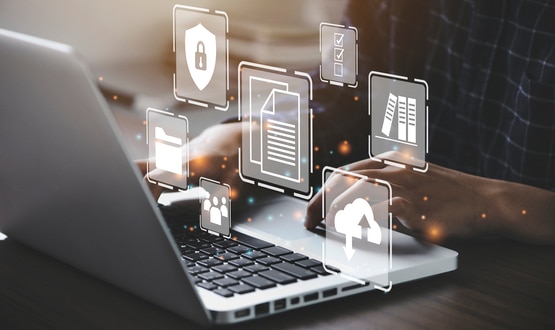Mobile phone transmits your ECG
- 11 October 2005
Engineers at Loughborough University have devised a mobile phone that easily receive, collate and send a person’s ECG and other vital signs and send them directly to clinicians, eliminating the need for large, fixed, telecare systems in patients’ homes.
 Professor Bryan Woodward and Dr Fadlee Rasid from the university’s department of electronic and electrical engineering have developed a prototype of a mobile phone (right) which can read, collate and send healthcare data directly from a patient to an external computer — a system the university believes to be a world first.
Professor Bryan Woodward and Dr Fadlee Rasid from the university’s department of electronic and electrical engineering have developed a prototype of a mobile phone (right) which can read, collate and send healthcare data directly from a patient to an external computer — a system the university believes to be a world first.
The prototype has so far been successful, although not without the normal coverage problems suffered by mobile phones. Professor Woodward explained: "The most important aspect of the system is the integrity of the signal. A cardiologist needs to see a heart signal as if it had come directly off the patient’s chest.
"Fortunately we can reproduce signals very accurately. The only limitations appear to be the temporary loss of mobile phone signal when going through a tunnel or other areas not covered by a mobile network."
Initial work on the system started six years ago, with a £160,000 grant from the Engineering and Physical Sciences Research Council for finding out how feasible health monitoring on new mobile phone technology would be.
Test subjects carry the prototype of the mobile phone, which connects to the wrist using sensors, and went about their everyday business, such as motorway driving, while wearing the devices. The system faithfully replicated heart data, oxygen saturation and body temperature, sending them to a remote computer — a project the university believes to be a world first.
One of the main hurdles Professor Woodward and his colleague, Dr Fadlee Rasid, had to overcome was getting the data from the patient into the phone. The first versions of the device used the best technology available at the time: infrared and GSM.
"Clearly, there’s an alignment problem there," Professor Woodward told EHI. "What we decided to do at that time was have the patient carry the device in a little holster, then we could tape the phone next to the processor." The new version now uses Bluetooth between the sensors and the phone and GPRS between the phone and the server.
Professor Woodward said: "The idea of using mobile phone technology is that a doctor can monitor a patient who can be literally anywhere, perhaps hundreds or even thousands of miles away, and they can speak to each other at the same time.
"It could be used for a number of medical purposes, such as remote routine check-ups, as well as in emergency and rescue situations."
Loughborough University may also be able to use the system in their research in sports development, with athletes carrying the devices while training and being monitored by doctors.
The next step for the researchers will be to develop a credit-card sized device that can do the same thing, which will be easier to carry for patients and athletes. In order to continue the work, Professor Woodward is currently looking for funding from commercial sources.
Links




